Hyundai Accent: Tire Pressure Monitoring System / TPMS Sensor
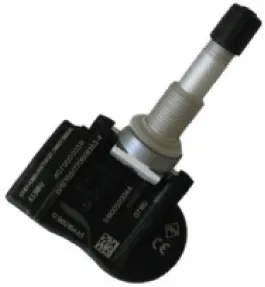
1.General descriptionWU is a sensor placed in the tire that reports pressure and temperature.The WU is mounted inside the wheels, fixed to the valve. The angle between the valve and the housing of the WU is variable.This allows adaptation to various types of rims.The Wheel Unit is made of a PCB supporting the electronic hardware and encapsulated inside a housing which is potted with polyurethane.It is self-powered by a battery and includes all systems for parameter measurement (pressure, temperature and centrifugal acceleration and optionally rotation direction), RF transmission and LF detection.To achieve the specified battery lifetime, the WU supports various measurement and transmission timings, depending on WU operation mode.For RF transmission, WU uses an internal antenna.
2.First Block Mode: When vehicle start driving, Sensor enter Mode First Block. Typical period of RF emissions is 16 sec. for 40 times for Auto-learning and Auto-location function.
3.Driving Mode: After 19 min. parking and then finishing Mode First Block mode, WU enter Driving mode.Typical period of RF emissions are 64 sec above 4g vehicle speed.
4.Parking Mode: at below 3g Vehicle speed, enter Parking mode. Typical periodicities of RF emissions are 13 hours.
1.Remove the valve core and deflate the tire.
2.Remove the side of the tire bead area from the wheel using tire changing machine.
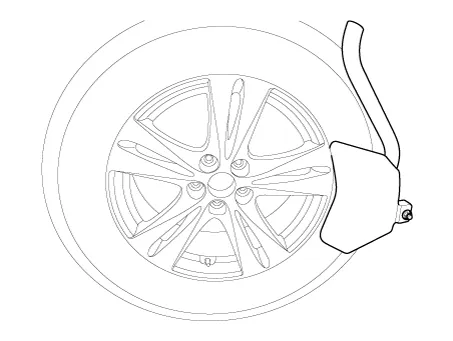

• The tire bead should be broken approx. 90° from the valve side of the wheel. The bead breaker should not be set too deep.
• Avoid tire/tool contact with the valve on dismount.
• Dismount should end near the valve.
3.Rotate the wheel clockwise.
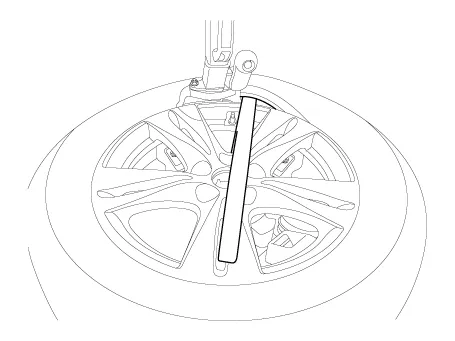
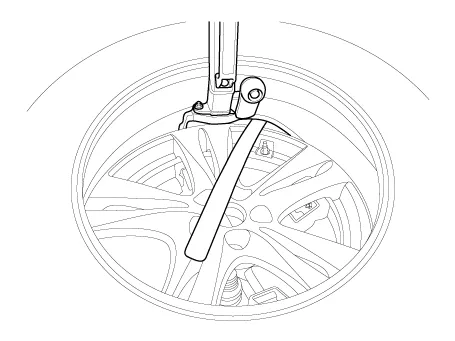
4.The valve during transportation (air inlet portion of the silver) deviated from its original location be sure to check whether the original position of the valve (metal brackets) are assembled in indented state.
5.While tightening the nut on the valve as not to deviate from the fixed position while rotating the valve to a fixed location (metal brackets to fit inside) and push. The specified torque (8Nm) to tighten the nut does not reuse.
6.Contact with the rim so that the valve washer seals the valve hole put into.
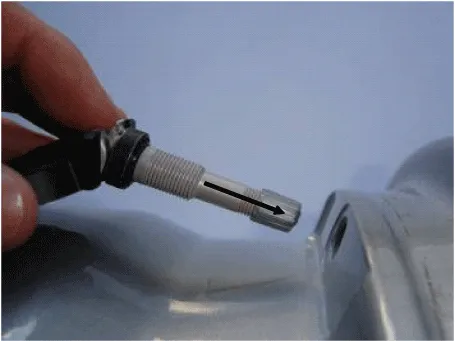
7.Housing with two fingers holding the valve in the axial direction with one finger and push the valve.
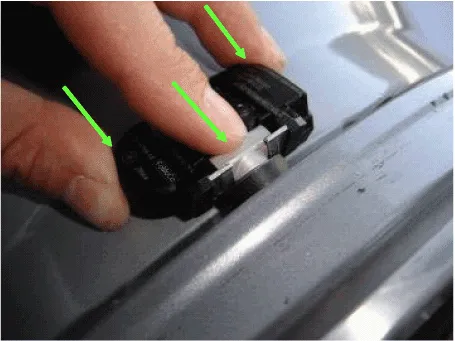
8.Housing, the state must be visible laser marking.
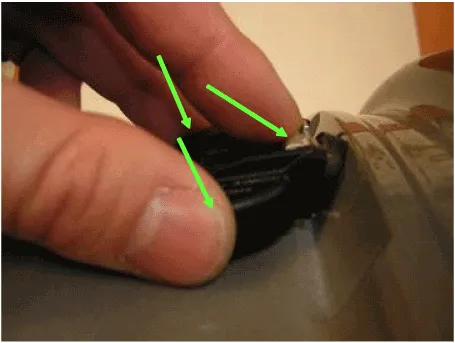
9.When the valve is fully inserted so that the contact between the sensor and the rim while keeping hands on the wheel nut tightening will start Wed.
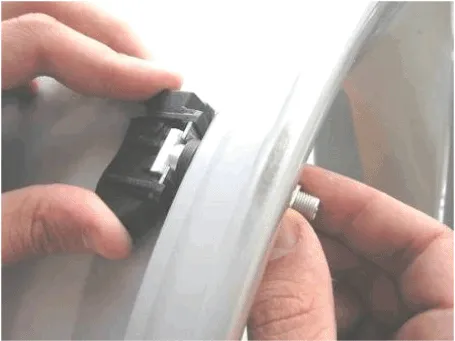
10.While maintaining the position of the valve and the sensor is mounted nut.
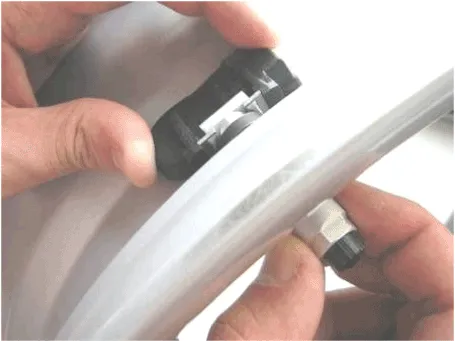
11.Apply tire soap or lubrication to the top and bottom tire beads.
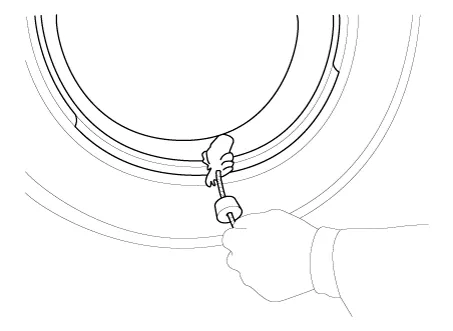
12.To fit the bottom bead, position the sensor at the 5 o’clock position relative to the head on the tire changing machine
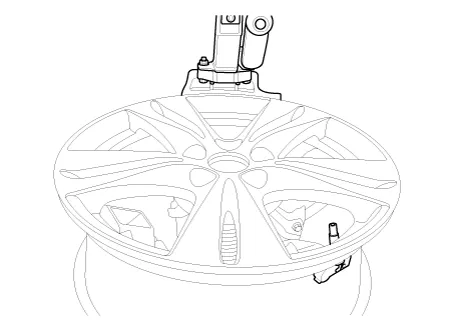
13.Place the tire on the rim so the bottom bead touches the edge of the rim after the sensor (@6 o’clock). Rotate the rim clockwise, and push down on the tire at the 3 o’clock position to fit bottom bead.
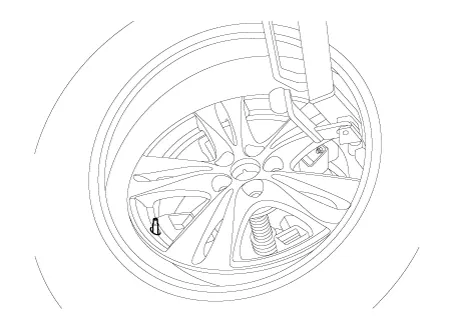
14.After bottom bead is on tire, rotate the rim until the sensor is at the 5 o’clock position relative to the head on the tire changing machine. Push down on the tire at the 3 o’clock position and rotate the rim clockwise to fit the top bead.
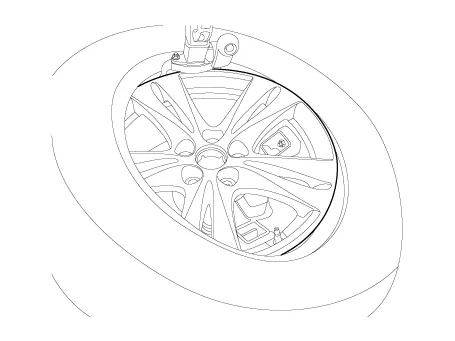
15.Inflate the tire until both beads seat.
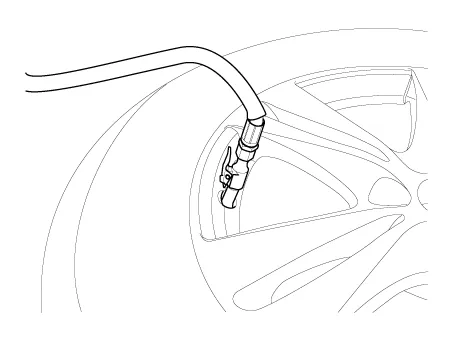
16.In the case of TPMS sensor failure, TPMS sensor needs learning. Faulty sensor is replaced new units, conduct learning of TPMS sensors.
1.Sealing washer on the outside rim of hole to be compressed.
2.The lower part of the valve housing, a fixed place (no metal brackets) should be located.
3.Housing is at least one or more points on the surface of the rim should contact.
4.The rim of the housing mounting height shall not exceed the height of the chin.
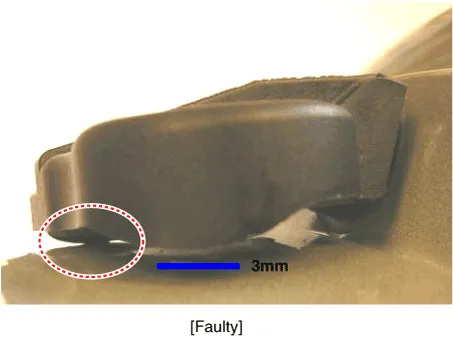
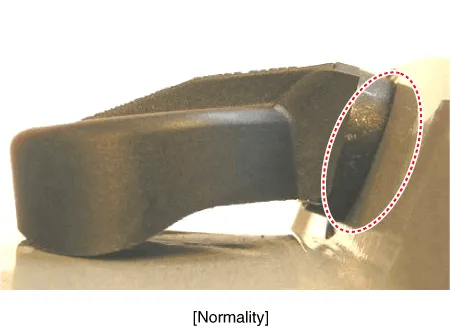
1.Connect self-diagnosis connector(16pins) located in the lower of driver side crash pad to self-diagnosis device, and then turn the self-diagnosis device after key is ON.
2.Select the "vehicle model" and "TPMS" on GDS vehicle selection screen, then select OK.
1.Connect the diagnostic instrument to the self-diagnostic connector (16-pin) beneath the crash pad on the side of driver's seat, and then turn on the ignition to activate the diagnostic instrument.
2.In the GDS Vehicle Type Selection menu, select "Vehicle Type" and "TPMS" System, and then opt for "OK."
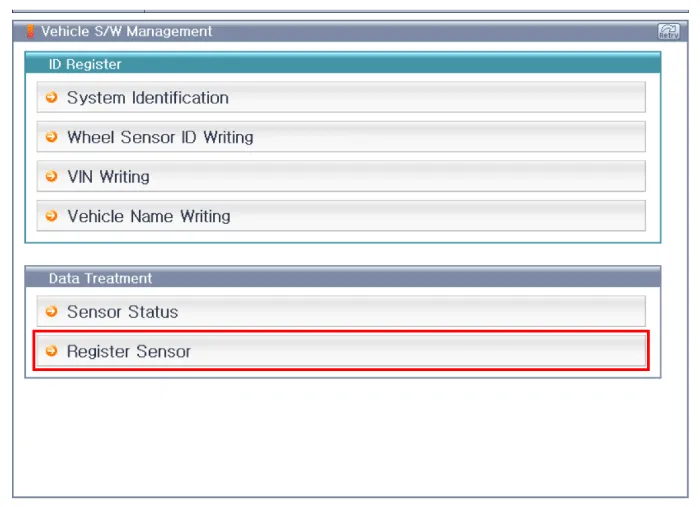
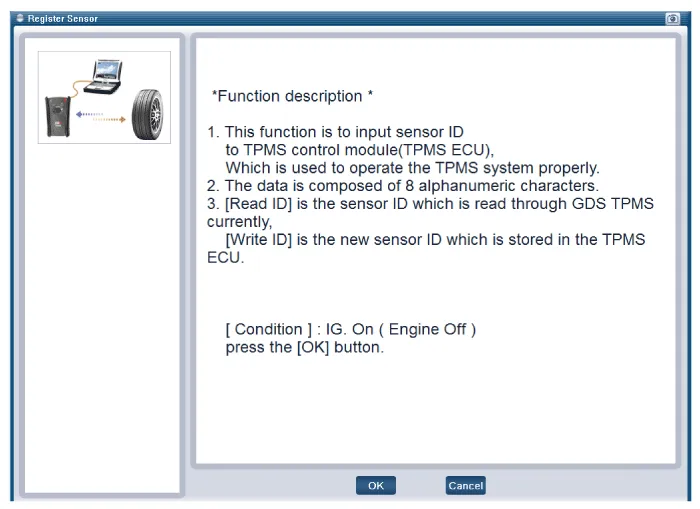
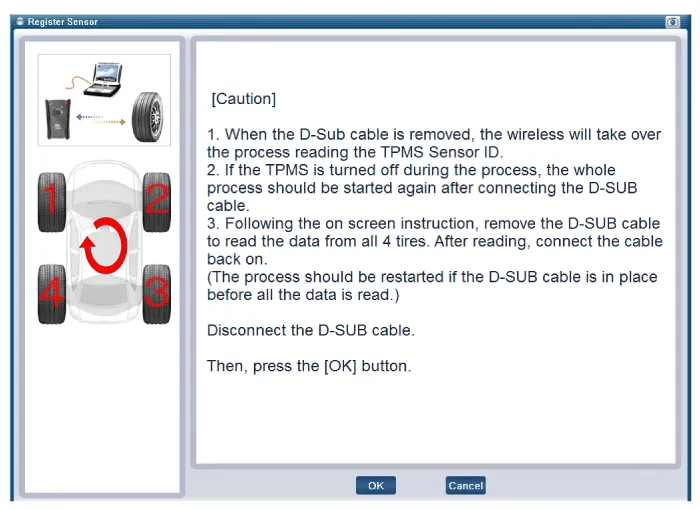
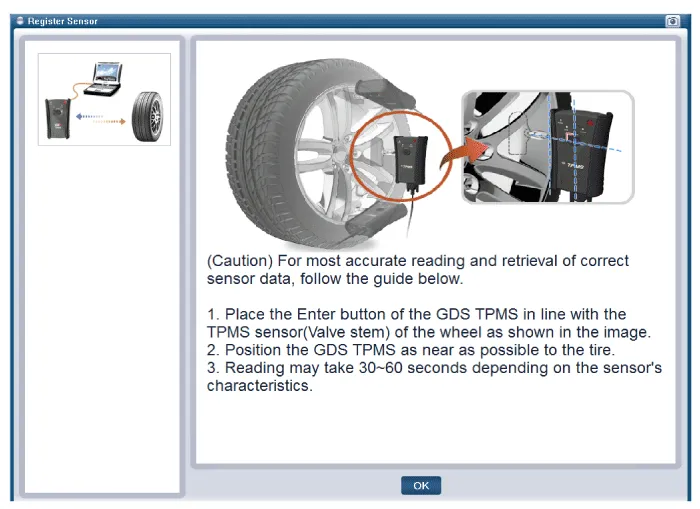
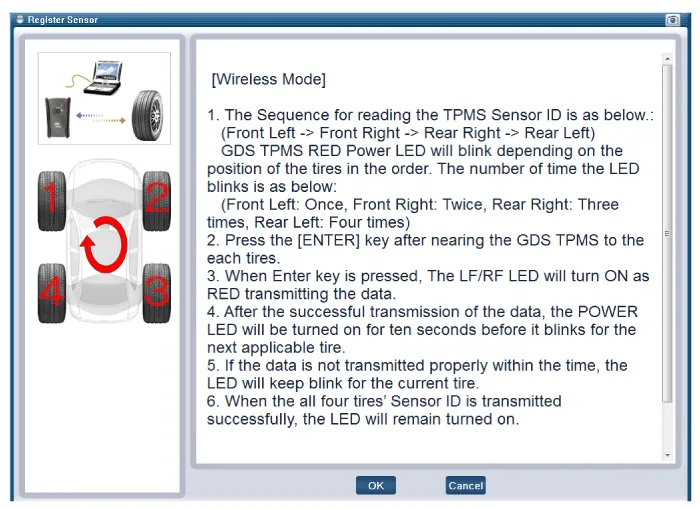
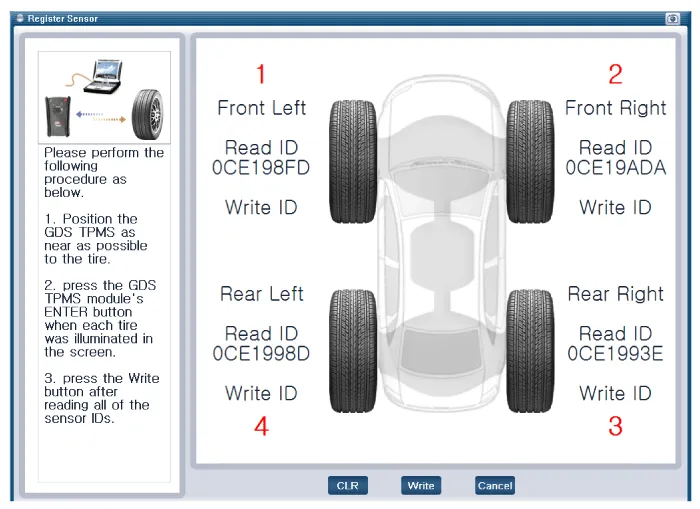
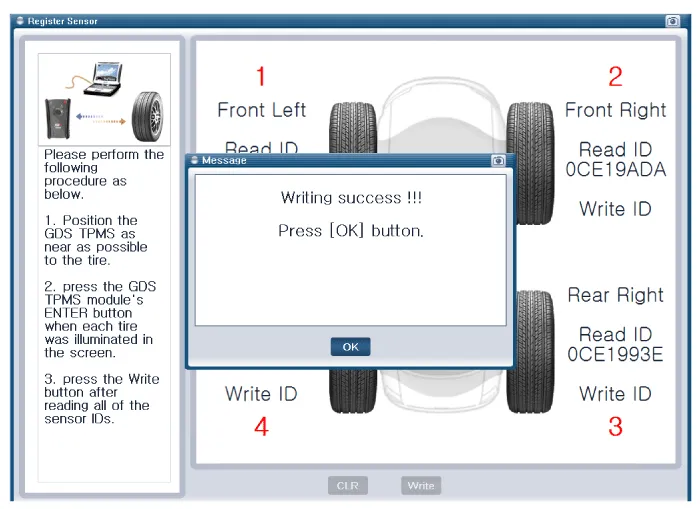
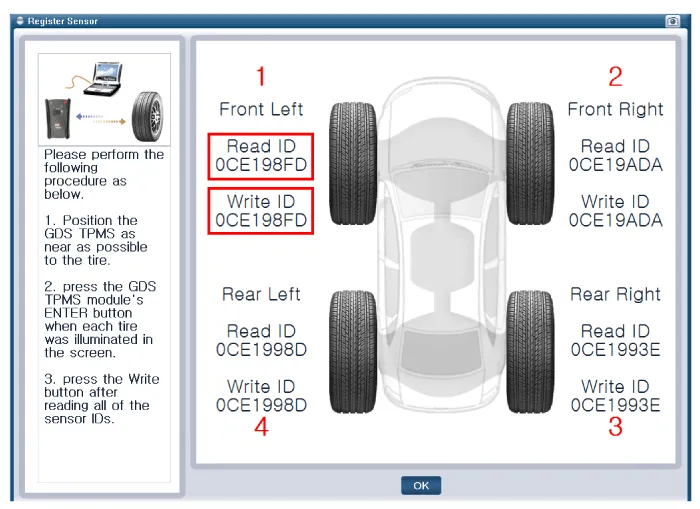

• Make sure that the read ID matches the written ID.
• After successfully registering the sensor, proceed to "Sensor Wireless Information" to ensure that the sensor functions correctly.
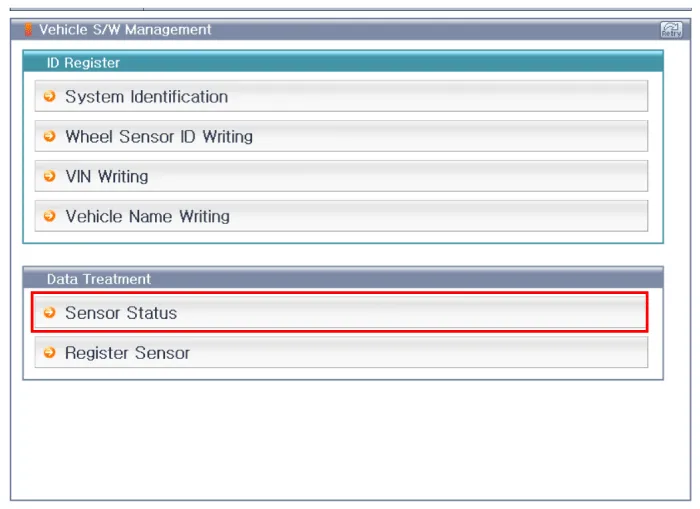
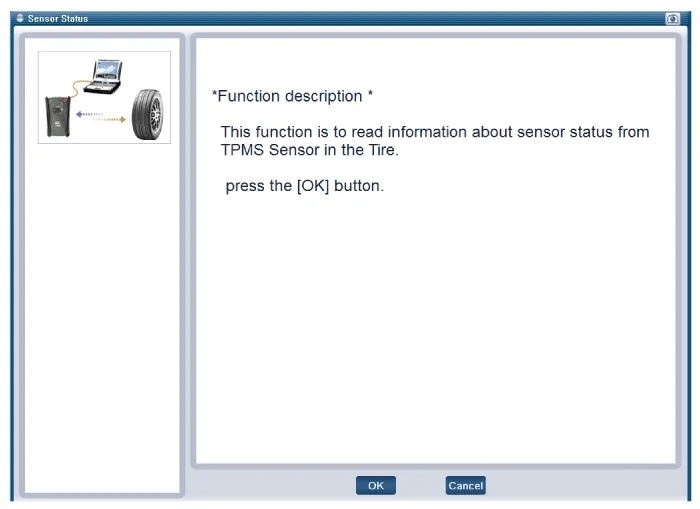
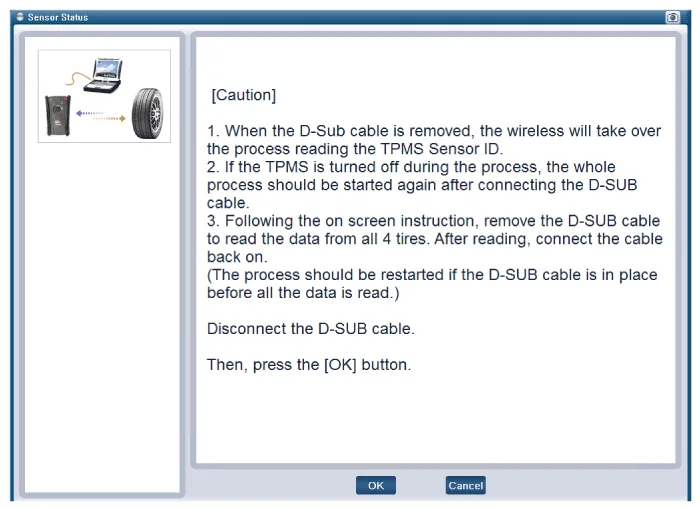

• In North America, the cable is measured separately.
• In Domestic/General(European) area, the cable is measured without separation.
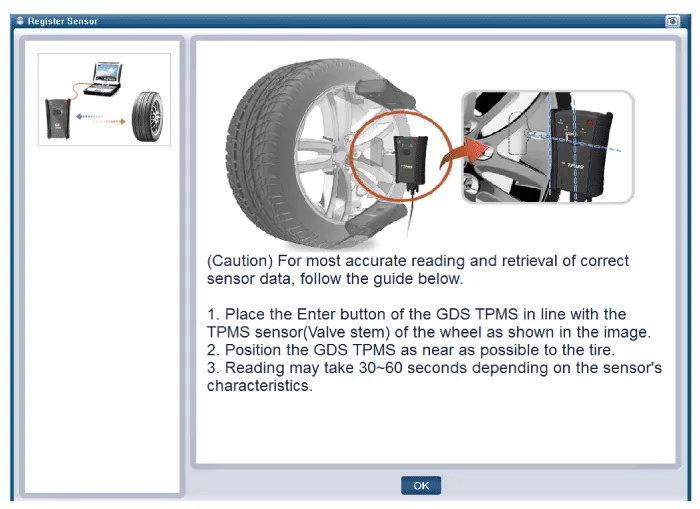
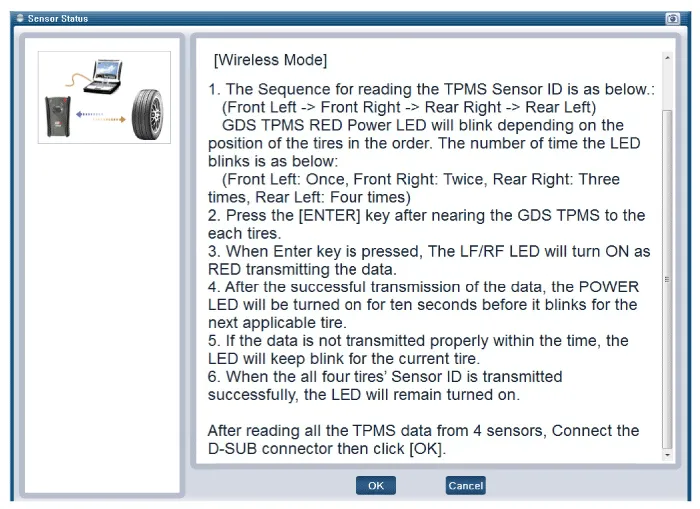
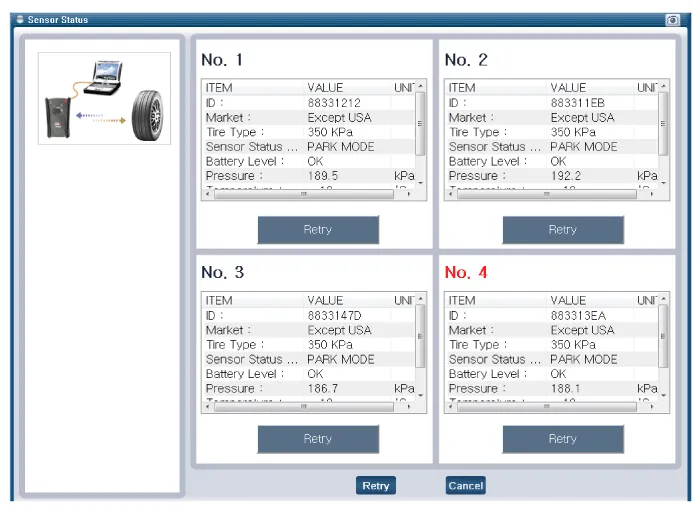

• Check each sensor component to ensure that it functions correctly.
• Replace any tires or sensors that do not function correctly, proceed to the sensor registration procedure, and check if the sensors function correctly.
Other information:
Hyundai Accent (HC) (2017 - 2022) Service Manual: Troubleshooting
- Troubleshooting Limp Home Mode Limp Home Mode features a fail-safe function that prevents dangerous situations in the event of a transmission failure. The vehicle will be driven in limp home mode if the transmission malfunctions. In this mode, the transmission operates at a minimal functionality level (fixed shifting, limited shifting, reverse, neutral), making it possible for the vehicle to reach a service center.Hyundai Accent (HC) (2017 - 2022) Service Manual: Power Door Mirror Actuator
- Components - Inspection 1.Disconnect the negative (-) battery terminal. 2.Using a screwdriver or remover, remove the front door quadrant inner cover (A). 3.Disconnect the tweeter speaker connector (A). 4.Using a screwdriver or remover, remove the outside rear view mirror cover (A). 5.Disconnect the outside rear view mirror connector (A).
Categories
- Manuals Home
- Hyundai Accent Owners Manual
- Hyundai Accent Service Manual
- New on site
- Most important about car


